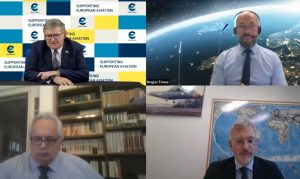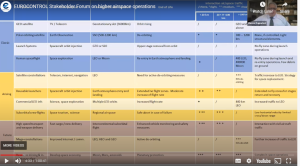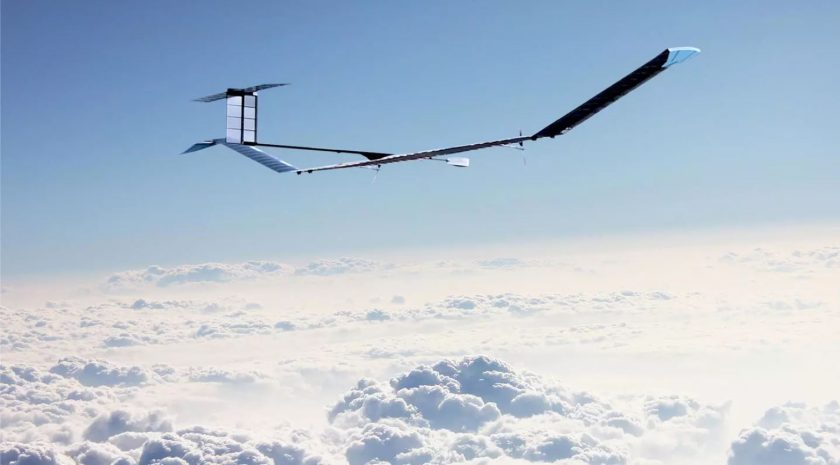By Jenny Beechener
“Higher Airspace Operations (HAO) cannot rely on traditional ways of making regulation,” said Giovanni Di Antonio, ENAC Director Technology Innovation, at the Eurocontrol HAO stakeholder forum on 13 October 2023. “Going forward we need a functional approach, based not on altitude but the scope of the operation. It must be risk-based and performance-based to reach a variety of architecture and users.” Developed in cooperation with the stakeholder, it also needs to be adaptive to follow the evolution of the technology using regulatory sandbox tools.
The higher airspace (approximately above 60,000 ft) hosts an expanding range of vehicles, including long-endurance balloons, high altitude platform stations (HAPS), supersonic and hypersonic aircraft, in addition to space rockets and military planes. With missions varying from connectivity and surveillance to passenger transport and satellite services, these vehicles with vastly different operating characteristics present a new airspace management challenge that requires new ground and air-ground operational integration procedures.

Philip Hughes, Eurocontrol Marco Caporicci, Special Advisor for Space Transportation, European Space Agency (ESA); Giovanni Di Antonio, Director Technology Innovation, ENAC; Dragos Tonea, Head of iNEO
Giovanni Di Antonio said regulators need to focus on the following areas:
- Access and use of the airspace, safe-guarding the sovereignty of the state;
- Implementation of innovative concepts, such as the 4D operating zones from the ECHO ConOps;
- Classification of different operations in a modular way to authorise different operators;
- Transversal areas of design and interaction;
- Ground infrastructure such as spaceports, tracking and surveillance.
He says operations need to be classified in three macro areas identified in the European Aviation Safety Agency (EASA) roadmap:
- Aviation operations such as supersonic, HAPS, similar to ICAO regulatory framework;
- Space operations such as vertical launch and re-entry from orbital flight, authorised by individual states;
- Hybrid operations which fall under air law and space law, for example sub-orbital flight.
He wants aviation operations to start now on a case-by-case basis, with individual states responsible for hybrid and space operations. “Gathering information, data and experience is needed to build a regional and international regulatory framework using a bottom-up approach.”

Integration of new entrants in the European ATM Network Operations, Eurocontrol ECHO2 Project Manager
Creating a “single planning process” is a high priority for Dragos Tonea, Head of iNEO – Integration of New Entrants in the European ATM Network Operations, Eurocontrol ECHO2 Project Manager. “A collection of sovereign states that individually manage their airspace will simply not be suitable or efficient in HAO. The airspace in the launch and re-entry phase is a critical resource that needs to be shared between two distinct communities: space and aviation.”
Eurocontrol Network Manager (NM) is looking at ways to expand the existing framework to include a new category of HAO users, for example refining current processes to accommodate different lead times and mechanisms to allow more dynamic airspace planning. Using the concept of 4D operating zones, where airspace is managed dynamically around vehicles by reserving and releasing airspace back to the community, NM can ensure the impact and cost of these operations are proportionate to the benefits they accrue.
“We envisage contingency management will become more and more part of our daily operations, illustrated for example by uncontrolled re-entries,” said Dragos Tonea. The process brings in other stakeholders including Europe’s crisis coordination cell, civil-military cooperation, as well as 43 member states to respond to these challenges. “We need standard methodology to open/close airspace otherwise the impact on the network can be massive.”
NM is looking to provide “smart airspace” management solutions where more advanced solutions for collision avoidance, notification, weather forecasts and so forth can evolve to support “safe space”, while complimenting and expanding on current air traffic management operations.
These topics sit at the core of the SESAR ECHO 2 project, which builds on results of the first ECHO project and Concept of Operations (ConOps) and supports ICAO harmonisation efforts and creation of global standards and recommended practices. ECHO 2 plans to build a prototype capable of integrating space data into NM systems to test contingency scenarios and share that information with air navigation service providers. It will also see two flight trials by Higher Altitude Pseudo Satellites (HAPS): one by Airbus Zephir and one by Italy’s Skydweller. Airbus Zephir is due to take off from the US, cross the Atlantic traversing Portugal, Spain, France and Italy before returning to the US without touching down. “The trials will give us much sought after real-time data to inform our decisions and how we simulate and built 4D operating zones,” said Dragos Tonea.
Listen to the webinar here
For more information
(Image: Zephyr solar-powered aircraft for Mobile Connectivity, Platform Mobility, Earth Observation and for Government applications, source: Airbus)




